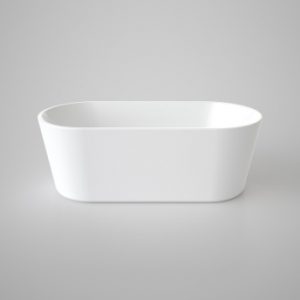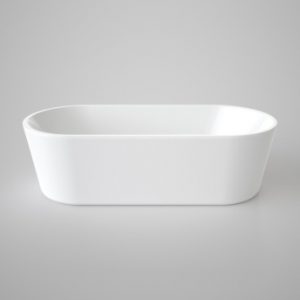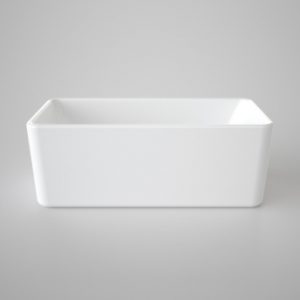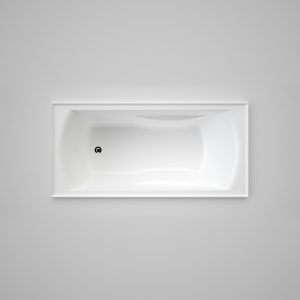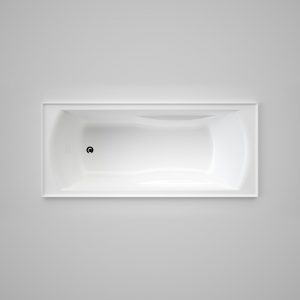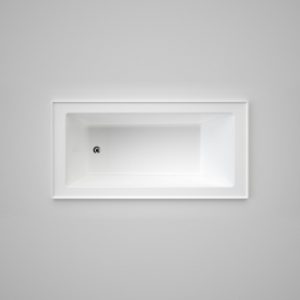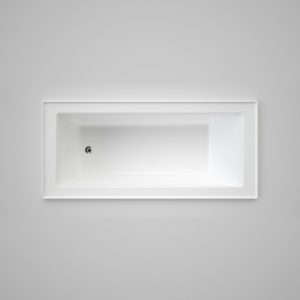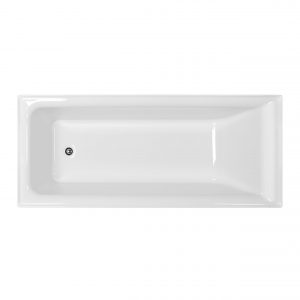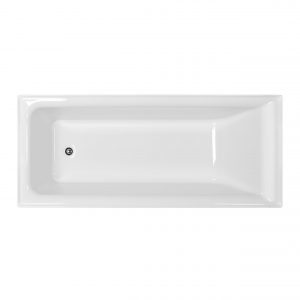Here’s what you need to consider when choosing a bath
Picking the right bath for your bathroom can be a difficult task. Will it match your bathroom? Will it match the rest of your house?
The choice gets even more complicated when you start to consider what bath size is appropriate, and if you want your bathtub freestanding, built-in, or back to wall?
Here’s a breakdown of what you need to know and consider when you choose a bath for your home.
Types of baths
There is a wide range of bathtubs available such as a freestanding bathtub, heated bathtub, shower baths, and even the option of a spa shower.
You’ll be able to find a large variety of baths for sale, regardless of what look and functionality you need.
Bath sizes
What is the standard size of a bathtub in Australia? How wide is a bathtub? These are common questions, but there isn’t one exact bath dimensions Australia standard.
Standard bathtub sizes in Australia are between 1500mm to 1700mm in length and between 700mm to 750mm in width.
A large bath usually measures 1800mm or more in length, whereas small bathtub sizes are 1400mm or less in length.
How many litres of water used?
When it comes to asking yourself how many litres in a bathtub, you might be surprised to know that the answer isn’t simple.
Of course, a small, narrow bath will use less water than large bathtubs, however in reality the amount of water used will come down to you. Standard bath sizes Australia will use anywhere between 50 to 150 litres of water in a tub.
However, it’s up to you to fill your bathtub to the level that you want. You could choose a large bath yet never fill it above half its capacity.
What materials are baths made from?
The five most common bathtub materials are:
- Porcelain Enameled Steel
- Acrylic
- Fiberglass
- Enameled Cast Iron
- Cast Polymer
Bath installation
How to install a bathtub on concrete floor changes slightly in difficulty depending on what type of bathtub you’re installing. A small freestanding bath will be a lot less complicated to install than a large heated bathtub that is built-in.
Before you can begin to install a bathtub, you might need to remove your old bath. Before you ask how to remove a bathtub, here are the steps:
- Pull out bathtub drain
- Disconnect drain
- Disconnect waste-and-overflow
- Remove tub spouts and tiles
- Remove bathtub
The installation process can be tricky but is doable as a DIY project for most people.
- When installing heavy, or large bathtubs, you may need to spread 50mm of mortar on the subfloor first.
- Position your bathtub and make sure that it is level.
- Secure the flange with 2.5cm nails.
- Connect the drain and water supply pipes.
- Seat the drain into your bathtub and secure it with the plumber’s putty. You will need to press it into place.
- Screw your water faucets into the water supply and seal the threads as you tighten them.
- Install the faucet handles (these may already be built into the faucet itself)
- Check for leaks in the faucet, handles, and drain.
Bath cleaning and maintenance
Whether you have a large bath or a small bath, it’s important to keep your bathtub in good shape.
If you’re asking yourself the best way of how to clean a bathtub or how to remove stains from a bathtub, the solution is simple. Follow these five steps for a clean as a new bathtub.
- Pour or squirt dishwashing soap over your bathtub
- Pour a ¼ cup of vinegar over the bathtub
- Take 4 to 5 tablespoons of baking soda and sprinkle that over the bathtub too.
- Now that you have prepped your bath, start scrubbing. Give any stains or other dirty areas a bit of a deeper scrub. Once you’ve scrubbed your entire bath down, leave it alone for 30 minutes to an hour.
- Using a washable cloth or paper towels, wipe down your bathtub. Finally, rinse down your bathtub and you’ve finished.
Bath safety
Baths can be slippery and this poses a significant safety risk, especially to infants and the elderly. Thankfully, there are a few easy options to minimise the risk.
The most obvious solution is to buy a bath mat that can be placed beside your bathtub.
If you are using your bathtub with a spa shower set up and will be standing in your bathtub the best way to minimise the risk of slipping is either:
- Place a plastic, non-slip mat inside the bathtub
- Apply non-slip stickers to the floor of your bathtub.
Choosing a supplier
Regardless if you’re building a new home, or just upgrading your current bathroom, it’s important to choose a supplier that is close to you and can meet your needs for the right price. It’s important to get several quotes so that you can accurately compare prices.
There is a range of suppliers for bathtubs Australia wide, so make sure to take the time to find a supplier who meets your budget and needs.
You should also check out a supplier’s reviews and what variety of baths for sale they offer. Most bathtub suppliers will offer the standard bath size Australia, including 1500mm bathtubs to small bathtubs and even larger tubs.









